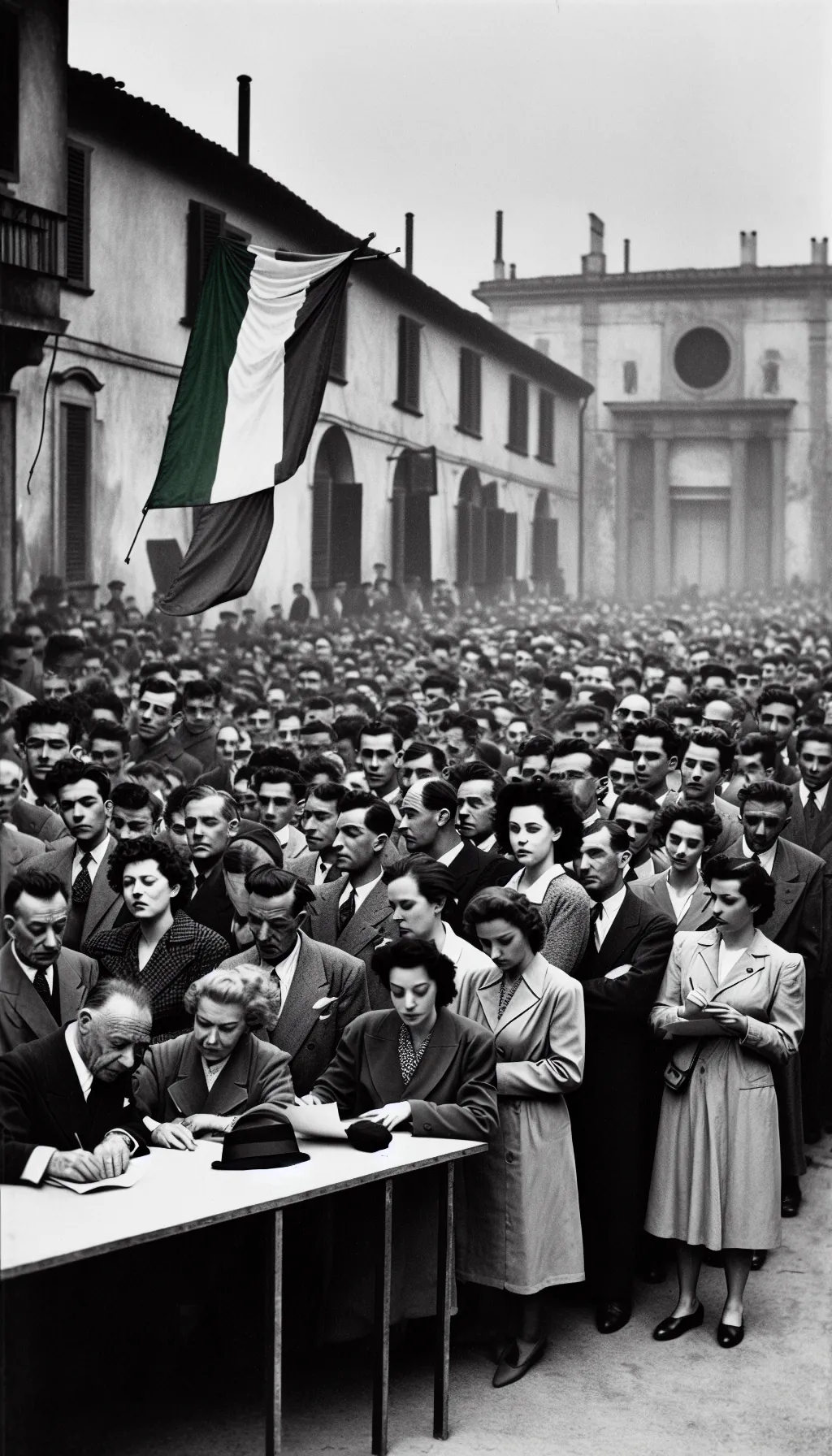Italy – The Day Italy Chose Its Future – June 2, 1946
TLDR;
- Event: On June 2, 1946, Italy held a historic referendum to decide between monarchy and republic, with women voting for the first time in a national election.
- Outcome: 54.3% voted for a republic, leading to the abolition of the monarchy and the exile of King Umberto II on June 12, 1946.
- Regional Divide: The north favored the republic, while the south, especially rural areas, supported the monarchy.
- Legacy: The referendum marked the beginning of the Italian Republic, symbolizing a break from the past and a commitment to democracy and renewal.
–
Story
The air was thick with anticipation on June 2, 1946, as millions of Italians, including women voting for the first time in a national election, made their way to polling stations across the country. The question on the ballot was simple yet profound: monarchy or republic? The decision would shape the very identity of Italy for generations to come.

In the aftermath of World War II, Italy was a nation at a crossroads. The monarchy, tainted by its earlier association with Mussolini’s fascist regime—despite Victor Emmanuel III having Mussolini arrested in 1943—faced a crisis of legitimacy. Meanwhile, the idea of a republic promised a fresh start, a break from the past, and a chance to rebuild a nation scarred by war and dictatorship.
As the votes were counted, tension gripped the nation. The results were close, but clear: 54.3% of Italians voted in favor of a republic, with a stark regional divide—the north overwhelmingly supported the republic, while the south, particularly rural areas, largely backed the monarchy. The decision marked the end of the monarchy and the beginning of the Italian Republic.
King Umberto II, who had ascended to the throne on May 9, 1946, after his father’s abdication, was forced into exile when the monarchy was formally abolished on June 12, 1946. The new constitution also banned all male descendants of the House of Savoy from entering Italy, a ban that lasted until 2002.
The referendum, held alongside elections for a Constituent Assembly tasked with drafting Italy’s new republican constitution, was more than a political decision; it was a statement of hope and renewal. It signaled the birth of a new Italy, one that aspired to be free, democratic, and forward-looking. The choice of a republic over a monarchy was a bold step into the future, a rejection of the old order, and a commitment to a new path.
–
| Would a different outcome in the referendum have changed Italy’s path in history? |